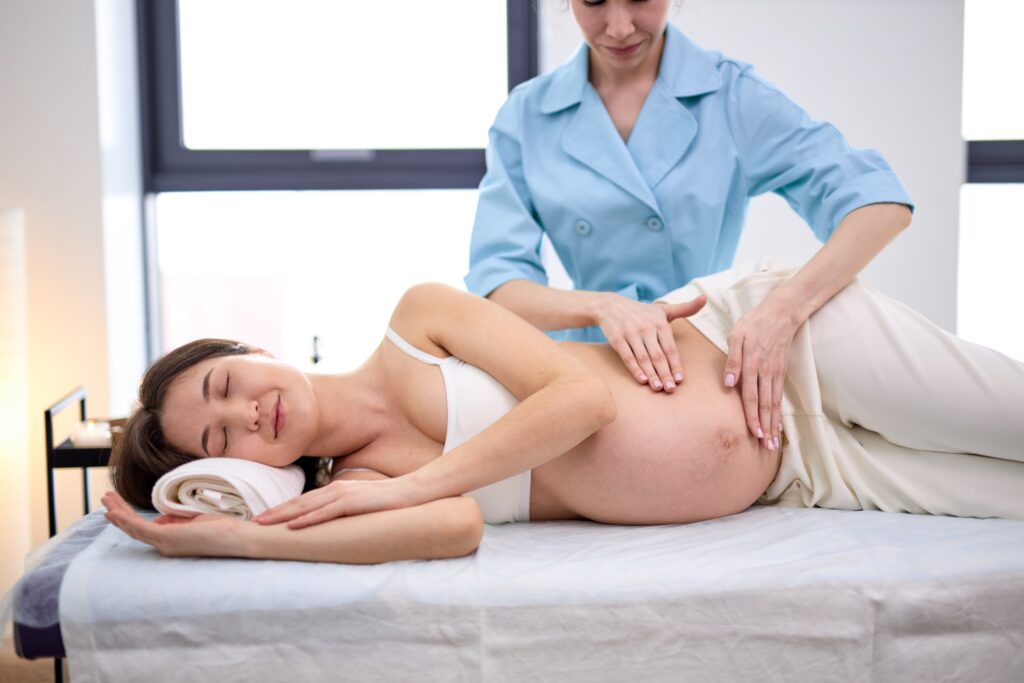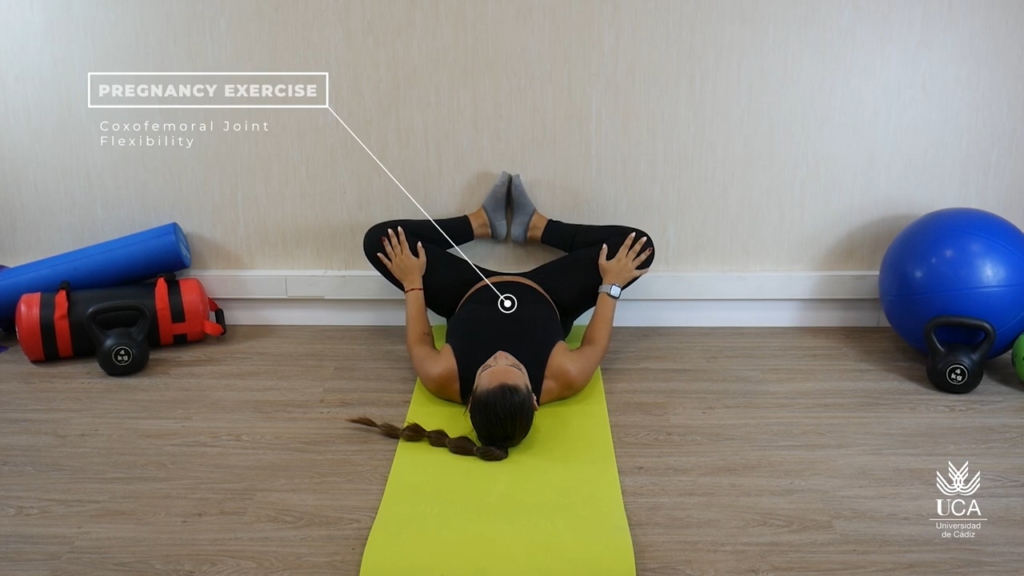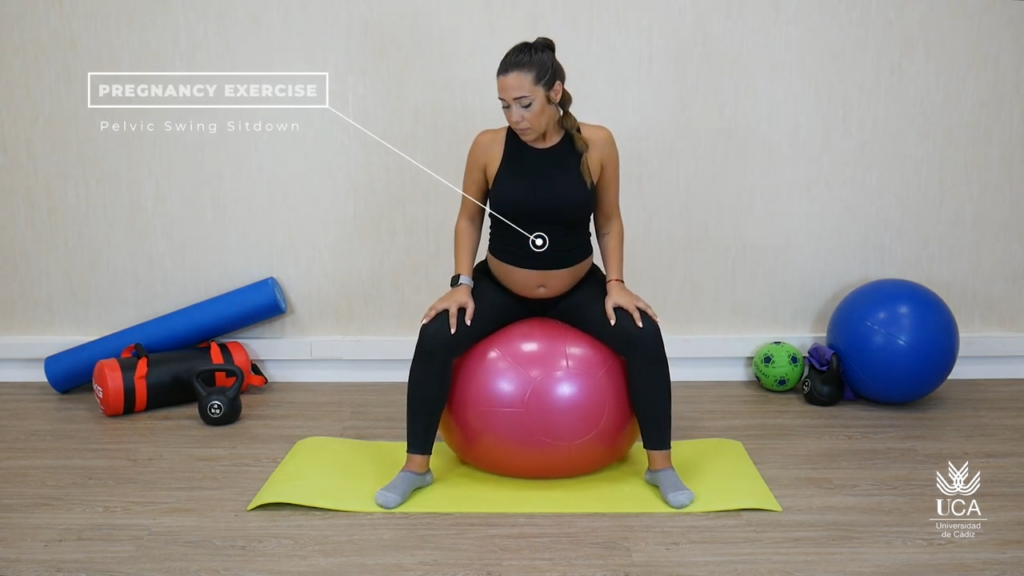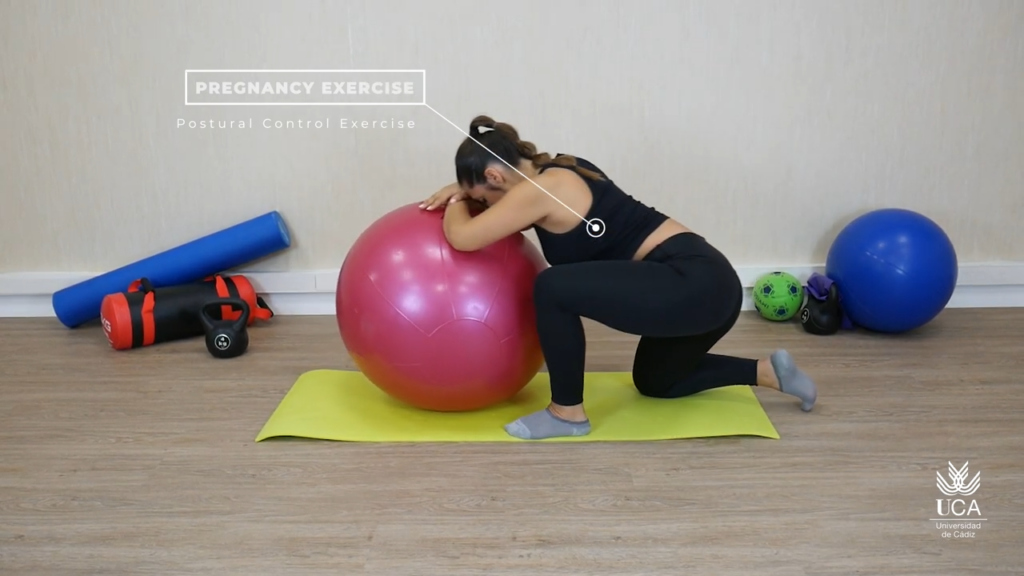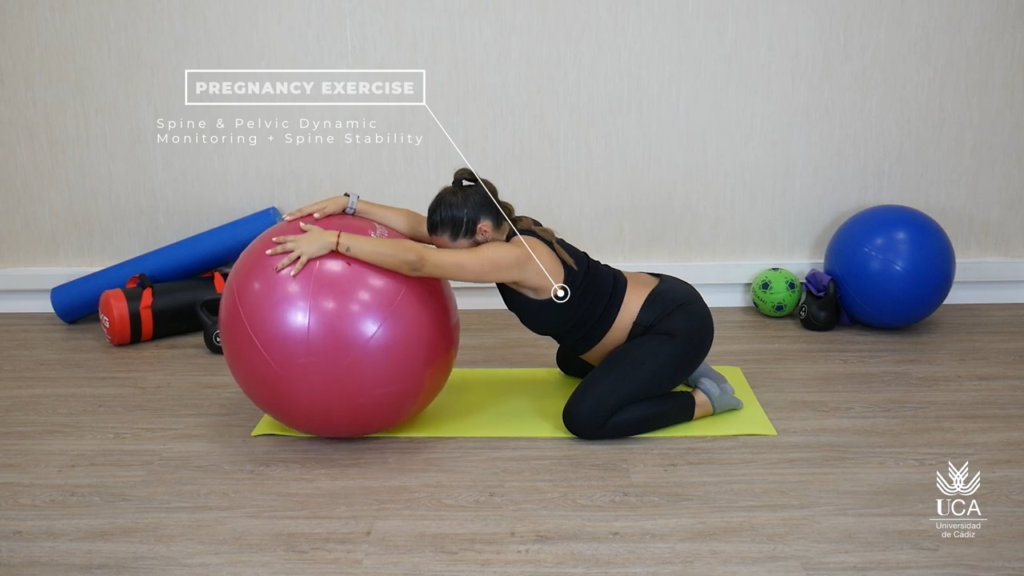In recent years, perineal massage has been widely promoted as a prophylactic technique to prevent complications during labor, with the main focus being the prevention of perineal lacerations during childbirth. The objective of perineal massage before childbirth is to increase the flexibility of the tissues in that area and reduce muscular resistance, allowing the perineum to stretch during labor.
Prenatal perineal massage allows the tissue to expand more easily during childbirth and, therefore, may decrease the incidence of perineal trauma. It can be performed once or twice a week by the woman or her partner, starting from 35 weeks of pregnancy.
In a systematic review on the topic, six clinical trials involving 1997 patients evaluated the effect of perineal massage. Two studies found a significant reduction in postpartum perineal pain in the perineal massage group. Another study showed a significant reduction in the duration of the second stage of labor associated with perineal massage. In subsequent studies, including a 2020 study with a sample size of 400 women, significant differences were found in terms of reducing rates of perineal lacerations, episiotomies, and postpartum pain in the group that received perineal massage. Perineal tears had an incidence rate of 13.5% and episiotomy rate of 29.5% compared to the control group, which had a 21.5% incidence of perineal tears and a 38.5% incidence of episiotomies.
Therefore, scientific literature has confirmed that the application of perineal massage reduces postpartum pain, shortens labor duration, and decreases the rate of perineal tears and episiotomies.
Inés Carmona Barrientos
References:
- Álvarez-González M, Leirós-Rodríguez R, Álvarez-Barrio L, López-Rodríguez AF. Perineal Massage during Pregnancy for the Prevention of Postpartum Urinary Incontinence: Controlled Clinical Trial. Medicina (Lithuania). 2022 Oct 1;58(10).
- Gómez M. Masaje perineal durante el embarazo. Revista Enfermería CyL. 2009; 1(2): 40-43.
- Schreiner L, Crivelatti I, de Oliveira JM, Nygaard CC, Dos Santos TG. Systematic review of pelvic floor interventions during pregnancy. Int J Gynaecol Obstet. 2018 Oct;143(1):10-18. doi: 10.1002/ijgo.12513. Epub 2018 May 18. PMID: 29705985
- Beckmann MM, Stock OM. Antenatal perineal massage for reducing perineal trauma. Cochrane Database Syst Rev. 2013;(4):CD005123.
- Shek KL, Chantarasorn V, Langer S, Phipps H, Dietz HP. Does the Epi-No ® Birth Trainer reduce levator trauma? A randomised controlled trial. Int Urogynecol J. 2011;22:1521.
- Labrecque M, Eason E, Marcoux S. Randomized trial of perineal massage during pregnancy: Perineal symptoms three months after delivery. Am J Obstet Gynecol. 2000;182:76–80.
- Eogan M, Daly L, O’Herlihy C. The effect of regular antenatal perineal massage on postnatal pain and anal sphincter injury: A prospective observational study. J Matern Fetal Neonatal Med. 2006;19:225–229.
- Demirel G, Golbasi Z. Effect of perineal massage on the rate of episiotomy and perineal tearing. Int J Gynecol Obstet. 2015;131: 183–186.
- Dieb AS, Shoab AY, Nabil H, Gabr A, Abdallah AA, Shaban MM, et al. Perineal massage and training reduce perineal trauma in pregnant women older than 35 years: a randomized controlled trial. Int Urogynecol J. 2020 Mar 1;31(3):613–9.
